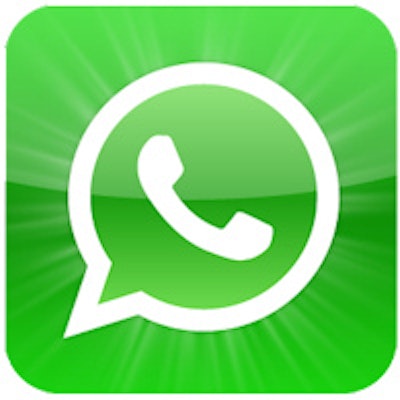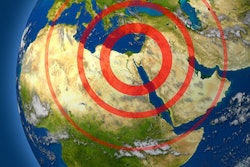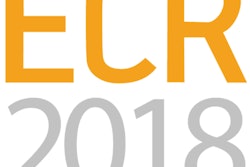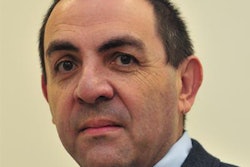
Researchers in Israel are finding new clinical uses for WhatsApp, the popular global text messaging platform. Reading images sent to smartphones via WhatsApp showed good agreement with the same images being read on a PACS workstation for pediatric orthopedic surgeons, according to a new study in Pediatric Emergency Care.
The researchers found "near perfect" agreement between interpretations made on the smartphone and those on the PACS workstations, indicating that orthopedic surgeons could use WhatsApp in a pinch to render a preliminary diagnosis before they have access to a computer. The findings could help physicians develop treatment plans more quickly and reduce unnecessary referrals to tertiary hospitals by enabling the images of injured children to be reviewed by a remotely located pediatric orthopedic specialist, wrote the team led by Dr. Ido Stahl of Rambam Health Care Campus in Haifa (Pediatr Emerg Care, July 11, 2017).
"Establishing a more accurate treatment plan in a timely manner can be facilitated by remote viewing of the x-ray images by the on-call surgeon," the researchers wrote.
A pervasive revolution
The pervasive use of smartphones armed with high-resolution cameras and internet connections has revolutionized the way people communicate, both for personal and professional use. WhatsApp is the most popular messaging application, with more than 900 million users who send 64 billion messages and 600 million images a day.
 Dr. Ido Stahl of Rambam Health Care Campus.
Dr. Ido Stahl of Rambam Health Care Campus.In healthcare, physicians have been using smartphones for years to consult with each other as a sort of informal form of teleradiology, snapping pictures off PACS workstations and sending them via instant messaging. However, smartphones have obvious limitations for viewing medical images, such as their small screen size and lower resolution compared with PACS workstations. The question was, what effect would these disadvantages have in the clinical environment?
Stahl and colleagues have already performed research on the use of WhatsApp for radiology applications, including a 2016 study in the Spine Journal that found high levels of agreement when spine surgeons first interpreted images sent via WhatsApp on their smartphones and then reviewed them a month later on PACS workstations.
For the new study, the researchers sought to assess the app's utility for pediatric trauma. Specifically, they wanted to see if the use of WhatsApp could address a growing trend toward overcrowding of pediatric emergency departments (EDs), as injured kids are shunted away from general orthopedic practices and EDs and toward tertiary hospitals with pediatric EDs. Many of these referrals are occurring because pediatric orthopedic specialists aren't available for consultation at general practices; if they were able to review images remotely, injured kids could probably be treated with more conservative therapy by general ED staff or adult orthopedic surgeons.
Stahl's team therefore performed an experiment in which a smartphone was used to capture images from a PACS workstation of 73 cases of pediatric limb trauma. The images were sent via WhatsApp on an iPhone 6 to pediatric orthopedic surgeons for interpretation. The reviewers were asked to diagnose, classify, and determine the course of treatment based on what they saw on their smartphones.
Four weeks later, the orthopedic surgeons were asked to re-evaluate the images on a conventional PACS workstation. The researchers then calculated intraobserver agreement for the interpretations, both overall and for each fracture site. They rated agreement using the kappa metric, in which a score of 1.0 indicates perfect agreement, 0 is the equivalent of chance, and less than zero indicates agreement less than chance.
Stahl et al found that kappa scores were high for all injury sites, but they were highest for the diagnosis of hip injuries and lowest for diagnosis of ankle injuries per malleolus.
| Reliability of pediatric trauma reads between WhatsApp and PACS, by kappa score | |||
| Injury site | Diagnosis | Classification | Decision-making |
| Hip | 1.0 | 0.82 | 0.9 |
| Elbow | 0.88 | 0.83 | 0.74 |
| Shoulder | 0.81 | 0.85 | 0.88 |
| Knee | 0.79 | 0.86 | 0.92 |
| Ankle | 0.74 (general) | 0.74 (medial malleolus) | 0.79 |
| 0.65 (per malleolus) | 0.82 (lateral malleolus) | ||
| Overall | 0.87 | 0.83 | 0.87 |
The findings led Stahl and colleagues to conclude that interpretation of smartphone images sent via WhatsApp was "reliable for evaluation of a wide range of pediatric limb fractures." It's also an easily accessible and inexpensive way to obtain expert opinions from offsite specialists, which can help achieve timely and appropriate care for injured children.
Despite the positive scores, the researchers were quick to point out that reading pediatric orthopedic trauma images on smartphones shouldn't replace the good old PACS workstation for final diagnosis.
"This method is not a substitution for evaluation of the images in the standard method over computer-based PACS, which should be performed before final decision-making," they concluded.



















